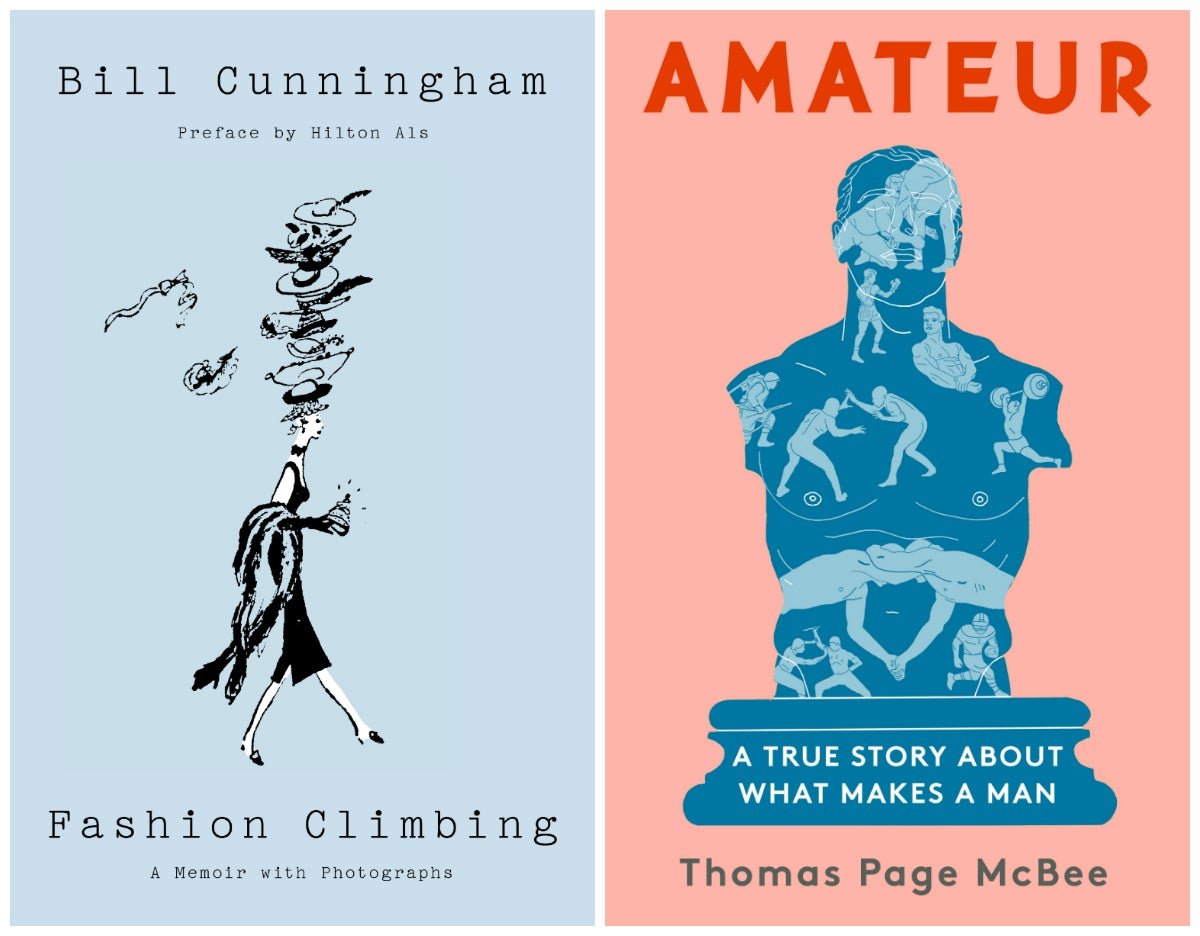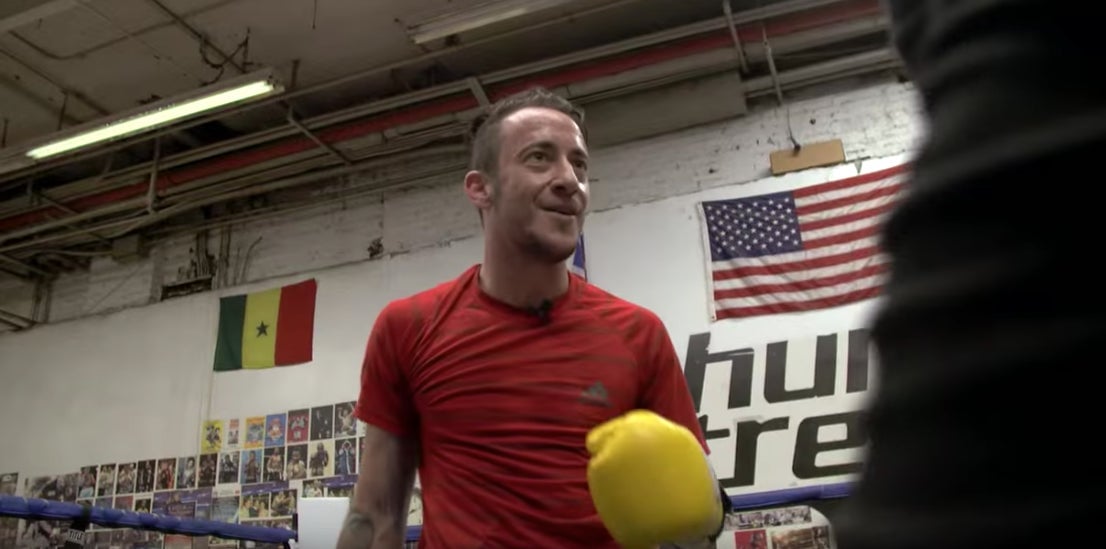New memoirs about fashion and boxing show men fighting toxic masculinity
On their faces, Thomas Page McBee and Bill Cunningham don’t appear to have much in common.


On their faces, Thomas Page McBee and Bill Cunningham don’t appear to have much in common.
At 37, McBee was recently pictured on a magazine cover, steadily gazing at the camera, tattooed, unsmiling, and shirtless in boxing gloves.
Cunningham, the famed New York Times fashion photographer who died in 2016 at age 87, is remembered for his wide, toothy grin and his habit of bicycling around Manhattan, snapping pictures of the city’s most outrageous dressers for his weekly column.
McBee’s second book, Amateur, published in August, is the story of how he came to be the first trans man to box at Madison Square Garden, in 2015. (McBee is also a former editor here at Quartz.) Cunningham, whose posthumous memoir, Fashion Climbing, came out this week, tells the story of his blossoming as a milliner and fashion world documentarian in New York and Paris in the 1950s and 1960s.
But both men’s biographies begin with childhood violence and shame surrounding society’s gendered expectations. Cunningham’s first fashion memory is the beating he took at age four after being discovered in his sister’s pink organdy dress. Before the age of 10, McBee endured years of sexual abuse by his stepfather, a story he told in his first book, Man Alive: A True Story of Violence, Forgiveness and Becoming a Man.
In the age of “toxic masculinity”—the epidemic of male entitlement, alienation, and violence that underlies the #MeToo movement’s tidal wave of trauma, as well as alarmingly high suicide rates for middle-aged men—these two books offer powerful, personal counter-narratives to the notion that manhood is defined by dominant and macho behavior. Both McBee and Cunningham elegantly demonstrate how men can fight for a better definition of manhood—one that includes vulnerability, empathy, and self-expression—simply by fighting to be themselves.

Fashion Climbing documents the decades before Cunningham became a photographer, from his upbringing in conservative Boston to landing a column in Women’s Wear and covering European fashion shows in the 1960s. Most of the pages in between are devoted to his early career as a milliner, a medium that was a true passion—and which brought, in his telling, endless shame to his family.
As a boy, he describes using his savings to buy the supplies to make his mother a hat—she “nearly collapsed in shame when she saw it”—and later to buy her a bias-cut dress with three red hearts on the shoulder. “Mother nearly had a fit,” he writes, “Now I was buying her clothes. Her reply was, ‘Think what the neighbors will say!’ These were famous last words with my mother and dad.”

So it feels like a triumph to watch Cunningham persevere—as an assistant in a fancy department store, as a hat-maker to Manhattan’s high society, as a private during the Korean War, training in a helmet “covered with a dazzling garden of flowers and grass,” and as a candid fashion columnist fighting his editor for his integrity. And to know that after the personal journey in Fashion Climbing took place, he would go on to celebrate that self-expression in others. As a photographer for The New York Times’ style pages, sure, he shot Manhattan’s society swans—but he also always made a point of celebrating those who let their freak flags fly.
For his part, McBee has grappled with a question, as he said recently during a talk at Skylight Books in Los Angeles: “How do I become a man even though I’m so afraid of men?”
The backbone of Amateur is the story of how McBee overcame that fear, plunging himself into the manly world of boxing: locker rooms, training gyms, and eventually, the ring at Madison Square Garden. His interviews with scholars such as Robert Sapolsky, a Stanford neuroscientist who speaks to the nuances of how testosterone affects behavior, bring a greater depth of understanding to these interactions. Sapolsky explains that testosterone doesn’t increase aggression as we understand it, but rather one’s willingness to do whatever is necessary to maintain status. If that means cooperation and collaboration, so be it. The problem is that often in our society, especially for men, it doesn’t.
It’s something of an “aha” moment: “If our world is riddled with male violence, the core problem isn’t that testosterone can often increase levels of aggression,” Sapolsky tells McBee. “The problem is the frequency with which we reward aggression.”
The Latin root of that most masculine of words, “aggression,” is revealing, McBee writes. It doesn’t mean to pound one’s chest or to threaten another man, but rather simply, to go forward. Incidentally, this is the same instruction that his boxing coach, Danny, shouts at him during his bouts of sparring in the gym.

“At the gym, Danny and Stephen and the rest of the guys called up that force in me, like magicians, and I allowed it—not, I realized, because it was gendered, but because it was necessary. To go forward,” McBee writes. “‘Now, again,’ Danny said through his gloves, calling me forward.”
There, McBee is surprised to find a space where the other men are vulnerable, affectionate, and supportive.
“If an alien had landed in that boxing gym and had to describe the behavior of male humans,” he writes, “surely it would have concluded that we touched each other as much in love as in violence—that the former, in fact, inspired the latter. If anything appeared ‘innate,’ it would surely be the affection between us.”
The cover of violence, he says, made it somehow safer to behave in ways that society might otherwise frown upon. The freedom that McBee found in fighting—a place to express and explore his own humanity—is not unlike the Shangri La that Cunningham finally found in fashion, with feathers and flowers flying about his studio.
Cunningham’s pages are devoted mostly to storytelling, but a digression in its early pages reads as a prescription for a society afflicted by toxic masculinity.
“American society has a lot to understand about the natural creative desires of children,” he writes. “This trend of thinking men who are interested in ballet, opera, and fields of design are just a lot of sissies has caused more unhappy family breakups. The country would not have half the trouble with mentally disturbed people it has if parents would accept each child’s God-given personality and stop trying to force what they feel is more suitable for their offspring.”
As Cunningham fought to realize his creative vision—“And what a fight it was!” he writes—McBee fights to understand what it means to be a “real man.” He finds the answer not in knocking out another man’s mouthguard, but rather in moments of vulnerability and the nurturing gestures of other men.
“What made me feel ‘real’?” McBee asks. “When [my coach] tied my glove on for me or poured water in my mouth, or when I tripped over the jump rope and had to begin again. I felt real when I asked for help, when I failed, when I was myself. I did not want to become a real man, I realized. I was fighting for something better.”